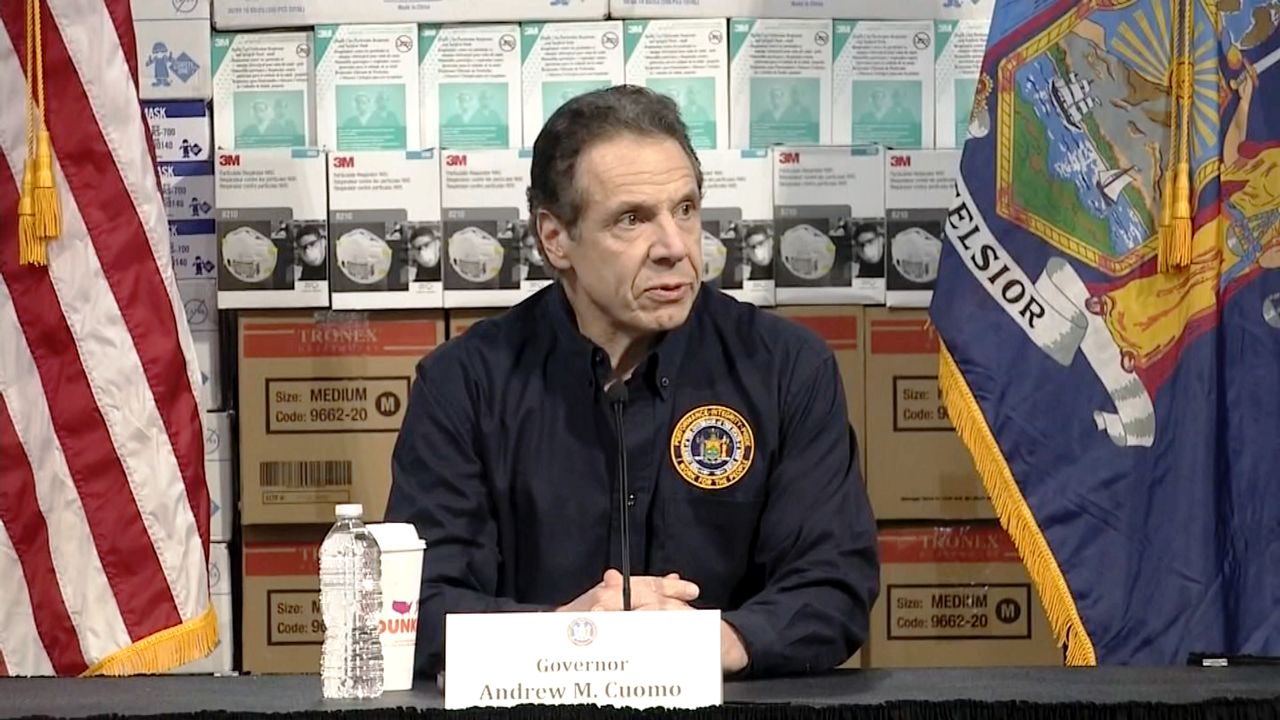Picture this: A nearly empty state Senate and Assembly chamber as the state budget is about to pass.
Lawmakers aren't in their chairs, but on a TV screen.
Picture this: A budget that is conducted not on an annual fiscal year basis, but with blanks that are filled in month to month or quarter to quarter.
The public health crisis surrounding the coronavirus pandemic is upending everyday life, including the content and process of New York's state budget.
Governors in New York already have broad influence over the shape of the spending plan by setting the priorities in the beginning of the year. In more normal times, the Assembly and Seante responds with their own budget resolutions as aspirational documents.
The budget sets spending and how to collect revenue. It increasingly has included policy prescriptions packaged within it.
But that traditional process won't be the case this year.
The pandemic has likely decimated New York's tax revenue, and Gov. Andrew Cuomo in a press briefing said the revised projects show the state has lost as much as $15 billion.
It's not yet clear if the state will receive more funding than the $5 billion for pandemic-related expenses as part of the federal rescue measure President Trump is expected to sign into law on Friday.
The solution? Revise expectations of revenue downward, but give the budget more flexibility. This will likely be without the Legislature, but left to the governor's administration and his top budget aide, Robert Mujica.
"We have to address this revenue loss," Cuomo said on Thursday. "We don't know how much. We don't know when the economy comes back. We don't the rate the economy comes back. We have to do a budget with all those unknowns."
The plan will have to be something that allows for adjustments "through the years to reflect the actual revenue."
And this will have to force schools and local govrnments to adjust as well to the new reality. Like all else, it's unknown how they can do that. School budgets, for instance, must be voted on in less than two months' time.
"It's frankly the only way we can do this budget when you have so many unknowns," Cuomo said.
In other words, Cuomo is seeking flexibility to be able to adjust throughout the year as the aftershocks of the pandemic continue.
As for voting itself, that process could be different this year as well after three members of the state Assembly tested positive for the virus, including one who was in Albany last week to cast a vote.
Senate Majority Leader Andrea Stewart-Cousins in an interview this week did not rule out using some form of remote voting for the Legislature.
In the Assembly, Majority Leader Crystal Peoples-Stokes has introduced a resolution that would change the rules of voting in the chamber during a national emergency.
Included in the text is an allowance for lawmakers allow for members to be in attendance in "by remote means including teleconference or videoconference and such members shall be continuously recorded in attendance" for the session.
Workers in the Assembly chamber on Thursday were seen setting up a large TV screen in the well of the room.


